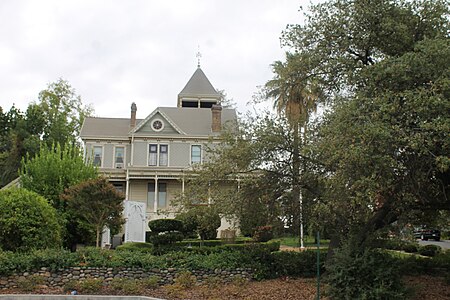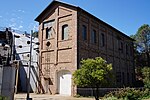Cohn House (Folsom, California)
1890s establishments in CaliforniaFolsom, CaliforniaHouses completed in 1890Houses in Sacramento County, CaliforniaHouses on the National Register of Historic Places in California ... and 6 more
National Register of Historic Places in Sacramento County, CaliforniaQueen Anne architecture in CaliforniaSacramento Valley Registered Historic Place stubsShingle Style architecture in CaliforniaShingle Style housesVictorian architecture in California

The Cohn House in Folsom, California is a building, in the Queen Anne Shingle Style of Victorian architecture, built in the 1890s in Folsom, California. The Cohn House was listed on the National Register of Historic Places in 1982. The listing includes an original house built in the 1860s.
Excerpt from the Wikipedia article Cohn House (Folsom, California) (License: CC BY-SA 3.0, Authors, Images).Cohn House (Folsom, California)
Sutter Street Figueroa Street Alley, Folsom
Geographical coordinates (GPS) Address Nearby Places Show on map
Geographical coordinates (GPS)
| Latitude | Longitude |
|---|---|
| N 38.678286111111 ° | E -121.17468333333 ° |
Address
Sutter Street Figueroa Street Alley
Sutter Street Figueroa Street Alley
95671 Folsom
California, United States
Open on Google Maps







